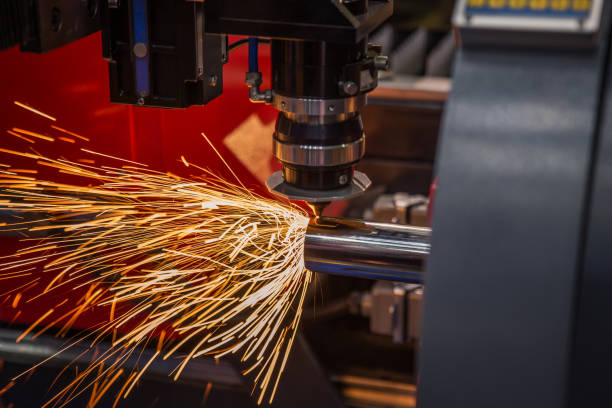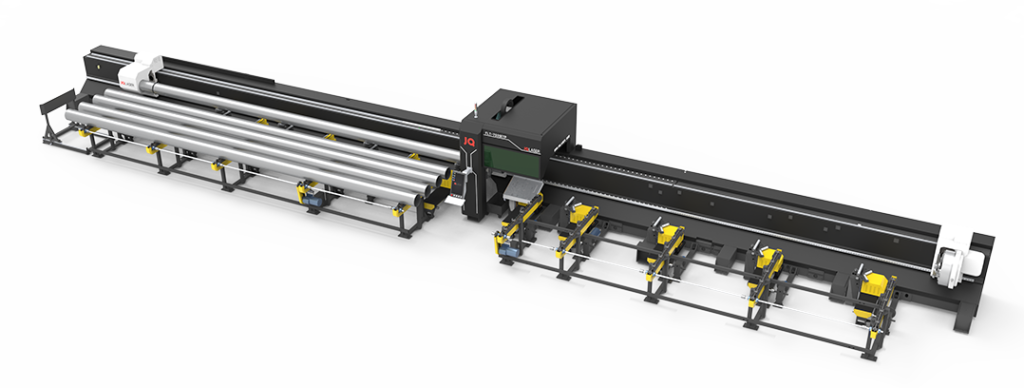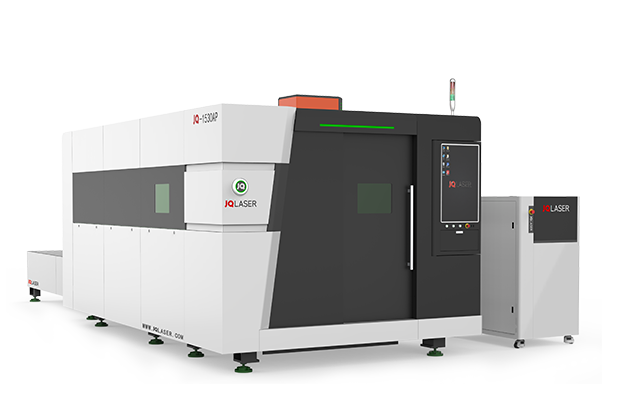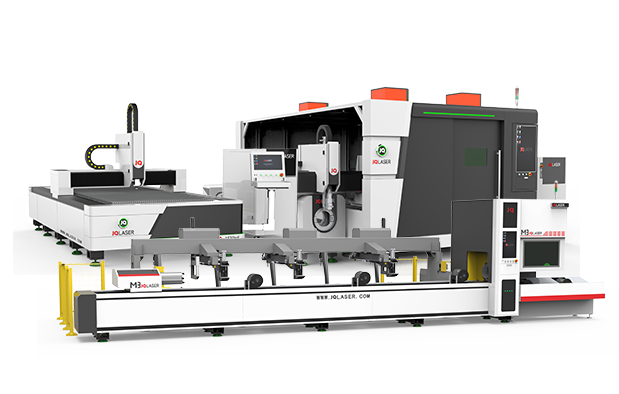Complex Phase Steel Formability of Steel
Complex phase steel is a type of high-strength low-alloy steel that has been developed to meet the needs of industry. It is known for its excellent formability and strength, making it ideal for applications such as automotive body parts and building components. Recent research has shown that laser cutting parameters can have an effect on the formability of complex phase steel, which can in turn influence how well products made from this material perform. This article will investigate the effects of different laser cutting parameters on the formability of complex phase steel, as well as their implications for design and manufacturing processes. The findings will provide valuable insights into how changes in these parameters can be used to optimize product performance while minimizing costs. Further research could also explore similar relationships with other types of steels and metals, opening up new possibilities for industrial applications.
Definition: Laser Cutting

Laser cutting is a technology that uses a high-powered laser beam to cut through materials such as metals, plastics, and more. The process involves the use of computer numerical control (CNC) machines which direct the laser beam along predetermined paths and at specific power levels to produce precise cuts in the material. This process has been widely adopted in manufacturing due to its speed, accuracy, and ability to create complex shapes in different types of materials with minimal manual labor involved.
The effect of laser cutting parameters on the formability of complex phase steel is an important area of research. By understanding how these parameters affect the quality of cuts produced by this technology, manufacturers can optimize their processes for improved results and cost savings. This article will explore the various parameters involved in laser cutting and examine their impact on formability when applied to complex phase steel.
Parameters & Effects on Formability
The effect of laser cutting parameters on the formability of complex phase steel is a headline worthy of attention. Laser cutting is an incredibly versatile process that can be utilized to cut through various types of materials, including metal alloys. The ability to manipulate the different parameters that affect laser cutting can significantly impact the formability of complex phase steel. In order to better understand how these parameters affect formability, it is important to analyze what type of effects they have on the material and how those effects lead to successful outcomes in terms of shape retention and durability.
By understanding the relationship between formability and specific laser cutting parameters, manufacturers can produce high-quality parts and components with greater precision than ever before.
Complex Phase Steel Properties
Complex phase steel is a type of alloy steel that exhibits exceptional strength and hardness. Its combination of properties makes it an ideal material for components that need to withstand extreme temperatures, pressure or wear. When fabricated using laser cutting technology, complex phase steel can be transformed into components with superior formability and performance.
This article examines the effect of laser cutting parameters on the formability of complex phase steel. It explores the role that focus position, beam power and cutting speed play in influencing the mechanical properties of this unique alloy. The results provide valuable insight for engineers seeking to optimize their fabrication process when working with complex phase steel materials.
Test Methods & Results
Test Methods & Results: The research team conducted a series of experiments to assess the effect of laser cutting parameters on the formability of complex phase steel. A total of ten samples were analyzed, each with different thicknesses and varied laser cutting parameters such as beam diameter, speed, frequency and power. To measure the formability of each sample, a tensile test was performed in accordance with ASTM standard E8/E8M-15a. Results showed that increasing beam diameter or decreasing speed had a positive effect on formability for all samples tested. Furthermore, an increase in frequency or power output also increased the formability for some samples but decreased it for others. These results suggest that selecting an optimal combination of laser cutting parameters is essential to producing a metal part with optimum formability characteristics.
Laser Cutting Process
Laser cutting is a process that utilizes laser beams to cut through metal, plastics and other materials. This innovative method has revolutionized the manufacturing industry, allowing for the production of more intricate and precise parts than ever before. In this article, we will explore how laser cutting parameters affect the formability of complex phase steel.
The use of laser technology in manufacturing has enabled engineers to achieve greater accuracy and efficiency when creating parts with complex shapes or patterns. By using different settings for the power, speed, focus and beam type of the laser cutter, manufacturers are able to control the quality and precision of their cuts. Additionally, these settings can have an effect on the formability of complex phase steel due to its unique chemical composition; as such it is important for manufacturers to understand how each parameter affects its performance.
Laser Cutting Parameters
Laser cutting has become an increasingly popular machining method, due to its high efficiency and accuracy. However, it is important to understand the effects that laser cutting parameters can have on the formability of complex phase steel. This article will explore how varying laser cutting parameters can affect the formability of complex phase steel and provide guidance for optimizing these parameters.
The study focused on three main laser cutting parameters: feed rate, air pressure, and focal spot size. The results showed that increasing feed rate and air pressure significantly reduced the formability of complex phase steel, while decreasing focal spot size slightly improved it. In addition, the research highlighted several factors that could influence these findings such as material thickness and surface roughness.
Relationship between Cutting Parameters and Formability
The relationship between cutting parameters and formability is a complex one. Laser cutting technology has revolutionized how complex parts can be manufactured, as it provides precision and accuracy in the production process. Laser cutting opens up the possibility for manufacturers to produce intricate parts with superior formability that would otherwise be impossible to achieve by traditional methods of machining.
This article will explore the effect of laser cutting parameters on the formability of complex phase steel. It will examine various parameters such as beam power, speed, frequency and focus distance, and how they affect the final product’s shape and surface finish. Additionally, it will look into other factors that contribute towards successful laser-cutting of complex phase steel such as material properties and post-processing operations. By understanding these different variables, manufacturers can better optimize their production processes while ensuring high quality results with maximum formability.
Results and Discussion
This study examined the effect of laser cutting parameters on the formability of complex phase steel. The results show that changing the laser cutting parameters can significantly influence the formability of complex phase steel. A higher frequency, power, and speed resulted in a greater amount of material being removed during laser cutting. The higher amount of material removal allowed for more intricate shapes to be cut with better levels of accuracy. It was also observed that a lower frequency, power, and speed resulted in a smaller contact area between the laser beam and workpiece surface which negatively impacted formability.
The results indicate that different combinations of laser cutting parameters can have varying effects on the formability of complex phase steel during processing.
Conclusion
The conclusion of this study is that laser cutting parameters have a significant effect on the formability of complex phase steel. The results showed that increasing laser power, decreasing the cutting speed and increasing the gas pressure all increased the formability of complex phase steel. However, it was found that too much power or too high a gas pressure could lead to certain detrimental effects on the material properties such as strength and ductility. Therefore, when using laser cutting for complex phase steel components, it is important to find an optimal combination of parameters in order to maximize formability while minimizing any negative impacts.
Overall, this study provides valuable insight into how different laser cutting parameters can affect the formability of complex phase steel components. These results will be useful for engineers who use laser cutters in their production processes and provide them with guidance in selecting suitable parameters for specific applications.






